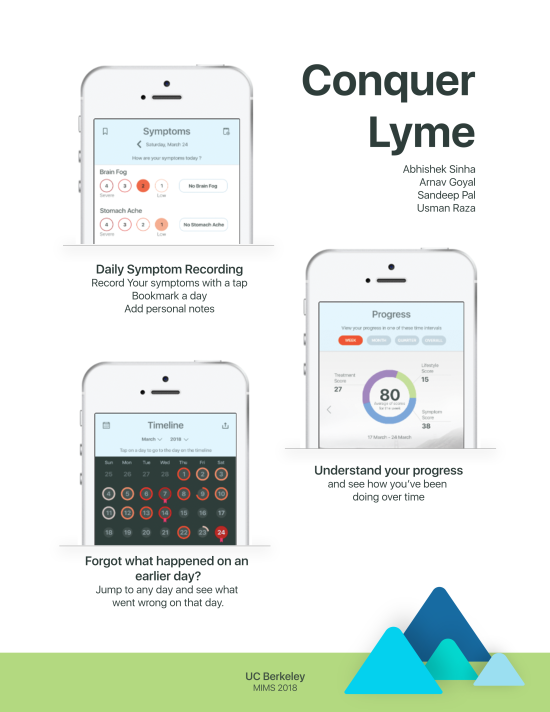Intelligent Symptom Tracker for Lyme Disease
Lyme disease is a tick-borne illness affecting mostly people who engage in outdoor activities. It manifests initially as skin rash and flu-like illness but can spread to bones, joints, heart and nervous system. The incidence in US is estimated by CDC to be 300,000 new cases per year, and increasing. Diagnosis is history based (only about 50% get the typical skin rash), and lab tests have poor sensitivity. Treatment is also unclear - some patients get better but others (>35%) don't respond and continue into a chronic phase of the disease. These patients sometimes track their symptoms in journals or Excel sheets (if they are tech savvy), and keep visiting their physician to try different treatments and lifestyle changes.
This project involved a mobile web app to help Lyme Disease patients keep track of their symptoms and activities and use analytics to identify trends and suggest which factors might improve or worsen their symptoms. Following a design thinking approach, we interviewed 16 Lyme patients and doctors, and surveyed many more, in order to deeply understand the patients’ health needs and challenges, their behaviors and motivations, and their relationship with healthcare providers. This was followed by an iterative design process that moved from paper mockups of UI design to low-fidelity and then high-fidelity designs. At each stage, user testing and feedback was utilized to refine the interface and interaction design. The design was translated into a mobile ready web app using AngularJS and Ionic framework. For data storage and reporting functionality, we designed and developed a PostgreSQL database for capturing symptom data along with other patient details. The database model can handle the variety of symptoms faced by Lyme Disease patients. We set up a middle layer web-server using python-Flask framework and implemented secure user authentication and session management. To guide the development of analytics for generating insights from data, we used anonymized and de-identified Lyme patient data, and created visualizations of symptom progression. Unsupervised learning was also used to cluster patients into subpopulations which yielded groups with mild, moderate and severe symptoms. Our final product is a functioning web app with basic features including account creation, symptom selection and tracking, which is ready for alpha release.












